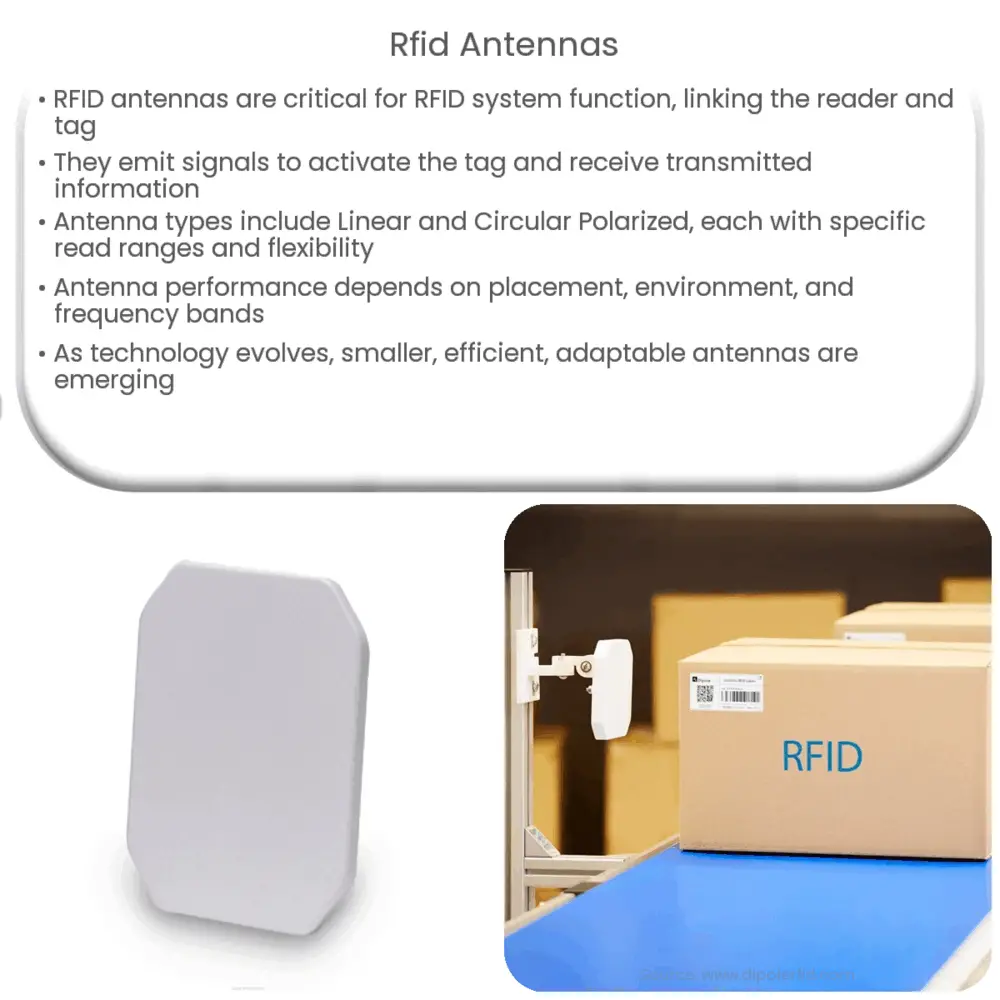Explore the essentials of RFID antennas, their role in RFID systems, types, performance factors, frequency bands, and future potential.

Introduction to RFID Antennas
In the realm of Radio Frequency Identification (RFID) technology, one of the essential components that often get overlooked is the RFID antenna. These components play a vital role in the functioning of an RFID system, serving as the link between the tag and the reader.
Understanding RFID Systems
Before delving deeper into the mechanics of RFID antennas, it is crucial to understand the basic workings of an RFID system. An RFID system consists of three primary components: the RFID reader, the RFID tag, and the RFID antenna. The reader sends out electromagnetic waves, the tag contains an RFID chip that stores and processes information, and the antenna facilitates communication between the two.
The Role of RFID Antennas
The function of an RFID antenna is multifaceted. The antenna emits a signal in the form of radio frequency waves to activate the RFID tag. When the tag enters the antenna’s field, it responds by transmitting its information back to the reader. Without the antenna, the reader and tag would be unable to communicate.
Types of RFID Antennas
- Linear Polarized Antennas: Linear polarized antennas focus the radio waves in a single plane. They offer a longer read range but require tags to be oriented in a specific way to be read accurately.
- Circular Polarized Antennas: Circular polarized antennas emit waves in a circular pattern. They have a shorter read range but can read tags oriented in any direction, providing greater flexibility.
Factors Influencing Antenna Performance
Several factors can impact the performance and efficiency of an RFID antenna. This includes:
- Antenna Placement: Antenna location directly impacts the effectiveness of tag reading. For optimum performance, it should be placed where tags are likely to pass within its field.
- Environment: Factors such as temperature, humidity, and the presence of metal or liquids can interfere with radio wave transmission, affecting the antenna’s performance.
Antenna Frequency Bands
RFID systems operate within specific frequency bands, each with its own characteristics and regulations. These bands, and the corresponding antennas, include:
- Low Frequency (LF): Ranging from 125 to 134 kHz, LF systems require larger antennas due to the longer wavelength.
- High Frequency (HF): Operates at 13.56 MHz. HF antennas are typically smaller and more compact.
Antenna Frequency Bands Continued
- Ultra-High Frequency (UHF): Ranging from 856 MHz to 960 MHz, UHF antennas are used in various applications due to their high data transmission rate and extensive read range.
- Microwave Frequency: Above 1 GHz, these antennas are used for active RFID systems, providing the fastest data transfer rates and the longest read ranges, although they are more susceptible to interference.
Choosing the Right RFID Antenna
Selecting the appropriate RFID antenna is critical to ensuring the effectiveness of your RFID system. Your decision should be guided by the specific requirements of your application, including read range, tag orientation, environmental conditions, and regulatory constraints.
Future of RFID Antennas
As technology evolves, so do RFID antennas. Innovations in design, material science, and manufacturing processes are leading to antennas that are smaller, more efficient, and more adaptable. We are beginning to see RFID antennas integrated into a variety of devices, from mobile phones to IoT devices, expanding the possibilities for RFID technology.
Conclusion
RFID antennas play a crucial role in the world of RFID technology. They serve as a bridge between the RFID reader and the RFID tag, facilitating the communication necessary for the system to function. Understanding the basics of RFID antennas – including their types, the factors that influence their performance, and the various frequency bands they operate within – is essential for anyone looking to implement an RFID system.
With the advancement of technology, the future of RFID antennas looks promising. As we continue to innovate, the capabilities of these antennas are bound to expand, paving the way for more efficient and versatile RFID systems. Whether you are a business looking to streamline inventory management, or an individual interested in the world of RFID, understanding these devices can help you make more informed decisions.

